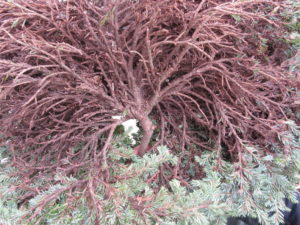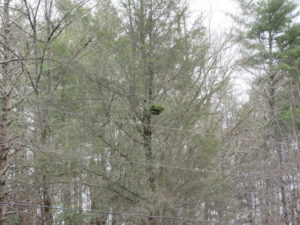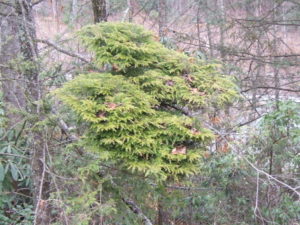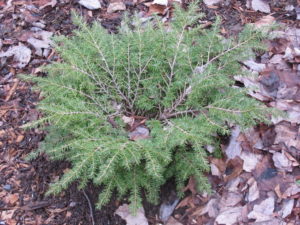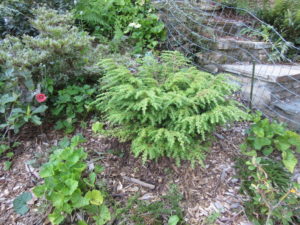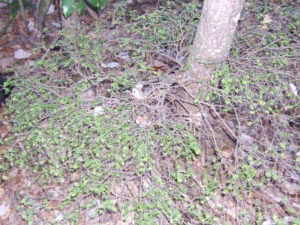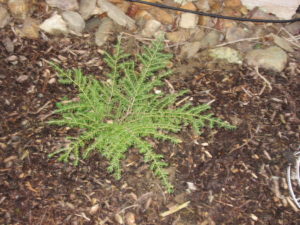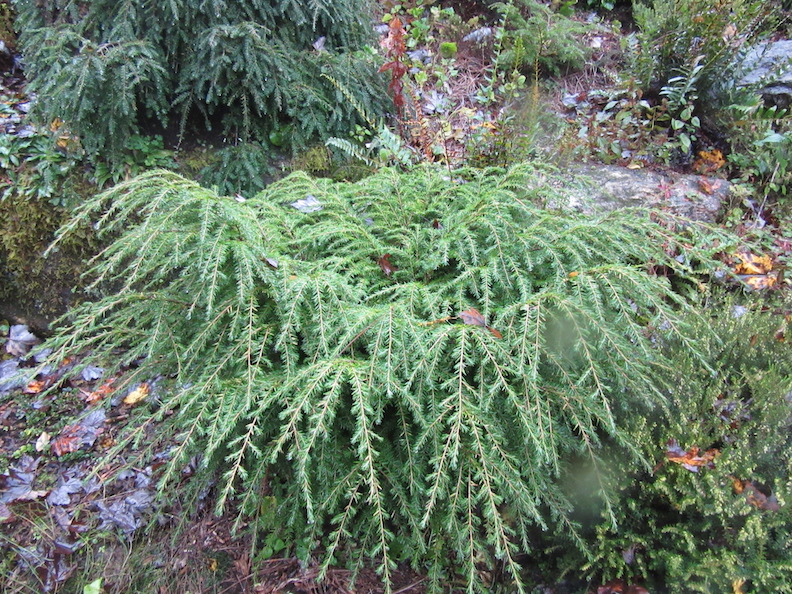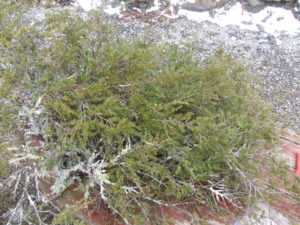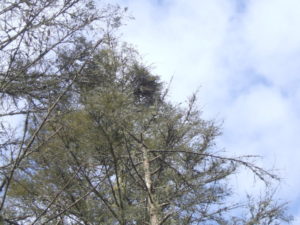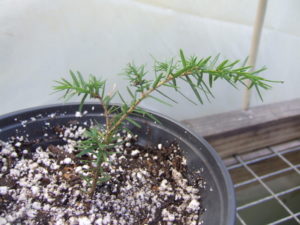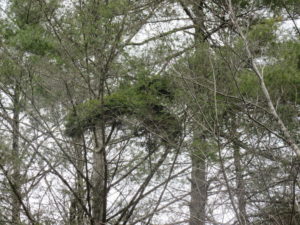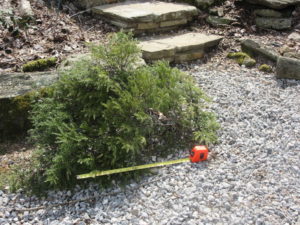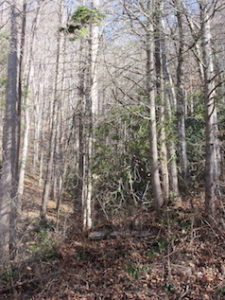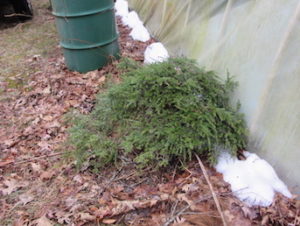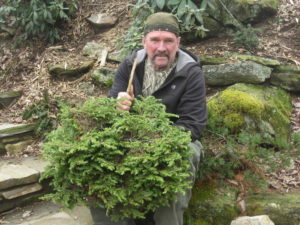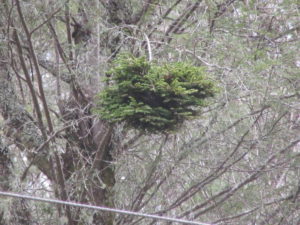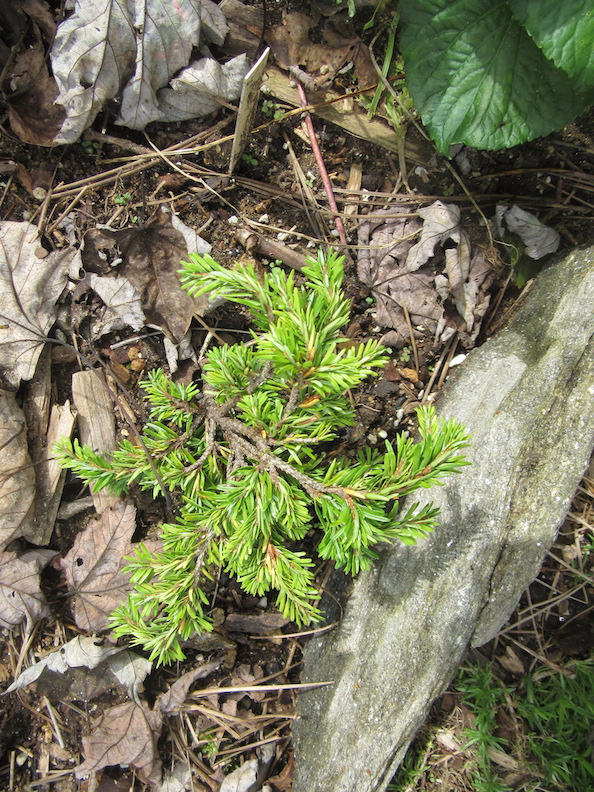Saving Hemlock Witch’s Brooms
What is a Hemlock Witch’s Broom?
The term “witch’s broom” refers to a growth on a plant that is not “normal” for its host plant. In most cases, these abnormal growths on deciduous trees and shrubs are due to damage from bacteria, fungi, insects or some other physical injury to the plant. And such acquired witch’s brooms do not have a genetic basis. In contrast, many witch’s brooms found on conifers originate from genetic “bud mutations”. And these genetic variations, which can occur on all native conifer species, can be captured by propagating the genetically altered “mutant growth”.
Horticulturalists have been utilizing such genetic variations, involving differences in conifer growth form or foliage or color, for centuries. Sometimes this is done directly – by collecting and propagating plant materials from brooms. But it can also be done indirectly, by utilizing seedlings produced by such genetically altered brooms. As a result, there are hundreds of named hemlock cultivars, most deriving from the Eastern hemlock (Tsuga canadensis). See Swartley’s (1984) The Cultivated Hemlock for more information on the many hemlock cultivars.
One of the benefits of being out-and-about in hemlock-rich areas is the occasional discovery of witch’s brooms on wild hemlocks. And one of the only positive effects of the heavy HWA “biological avalanche” that swept into the Southern Appalachians has been to increase the visibility of hemlock witch’s brooms (at least for brooms that have higher HWA resistance than the parent tree). This genetically-based HWA resistance is also relevant to researchers working on strategies to enhance HWA resistance in our native Eastern hemlocks. But even a highly HWA-resistant broom cannot survive the death of its less resistant parent tree, which makes the collection and propagation process important for both scientific and horticultural purposes.
Working with Hemlock Witch’s Brooms
Most of my hemlock broom “finds” were first spotted by a local friend, Nelson, who has become a “conifer broom scout” by avocation. And the majority of these discoveries have been along public roadways passing through hemlock areas. There are some theories that this tendency for conifer witch’s brooms to be found-along-roadsides is due to some causal role of sunlight or other radiation in the creation of the bud mutations. My best guess is that there are brooms everywhere, but those along roadways are easier to spot.
Below is an example of what you will observe with a hemlock witch’s broom. First, you will note some obvious differences in either growth form, or needles or color that makes the broom stand out from its parent tree and surroundings. In the example below, all three kinds of differences appear to be present. But you should always check the back of a broom to confirm that it is genetic in origin, as a broom will have a clear demarcation between the normal and altered growth at the point of the genetic mutation.
I would like to encourage others to “keep an eye out” for wild hemlock witch’s brooms and to find a local source for help in collection and propagation of these interesting growth forms. For this, you may need a climber to get up the tree to the broom location and a horticulturally oriented person who has a propagation misting setup that you can use. For the latter I was able to draw on the knowledge and experience and facilities of landscape conifer specialist Bruce Appeldoorn as my propagation mentor (http://appeldoornlandscapenursery.com). And while I now have a small propagation chamber of my own, I continue to share collected broom specimens and work with Bruce whenever possible.
Hemlock Witch’s Broom Discoveries
Here are some examples of hemlock witch’s brooms that I have collected and propagated over the last decade. My first collected hemlock broom, that I named ‘Nantahala’, had a truly spectacular presentation and was conveniently accessible from the ground, so no climbing was required. This was collected by me and propagated by Bruce, before the parent tree and broom were destroyed by a DOT work crew doing “roadside maintenance”. (This loss motivated me to construct my own propagation set-up.) The rooted Nantahala specimens have a circular or birds-nest growth pattern and are lighter in color than the normal Eastern hemlock.
Another hemlock witch’s broom – found on my own property by our Bearded Collie, Parker – was located near the bottom of a small hemlock with little or no access to sunlight. The broom was very gnarly in form with small needles, but the rooted specimens of ‘Parker’ have normal size needles and a circular growth habit as shown, similar to Nantahala. This shows that the transition from broom to rooted plant is not as straightforward as I had expected!
As it grew, Parker developed a well-defined birds nest form, but with a flair – very different from the original broom, but rather striking.
A third broom example, collected in January 2014, was located at the top of a large, badly HWA-defoliated hemlock. When brought to the ground, this broom ‘Connestee’ was obviously in poor health. As a result, neither Bruce nor I were able to root the cuttings. However, this broom did have cones which had already dispersed seed during the previous Fall. And 2 years later I was able to locate several small, non-upright hemlock seedlings in the immediate vicinity of the broom tree – which is now dead. And these seedlings may provide an indirect source of the genetic mutations that this broom represented.
In March of 2016, my “broom scout” Nelson observed a huge (12’x3’x2’) and apparently healthy witch’s broom in a heavily defoliated roadside hemlock. My climber Johnny and I were able to retrieve a piece of this broom, which I shared with Bruce Appeldoorn. And I directed the NC State Hemlock Resistance project to collect a piece for themselves. This broom, ‘Chattahoochee’, has been successfully propagated, but the growth characteristics are not particularly interesting.
Two new hemlock WB’s were collected and propagated in January 2017. One is a small broom with a flat growth habit that I am calling ‘Little Pisgah’. It does not appear to have special resistance to HWA, but it was located in an area where the surviving hemlocks were recovering due to earlier predator beetle releases.
The other new 2017 hemlock witch’s broom is a very “exotic” specimen which differs from normal Eastern hemlocks in many respects. This is probably the most interesting hemlock broom that I have collected and will be named for my “broom scout” Nelson, who discovered it and is pictured below.

